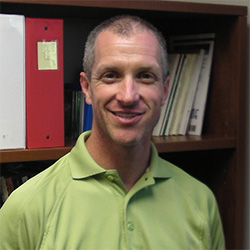Context
The assurance of learning plan in our school includes professionalism as a program goal, yet we have struggled to adequately address it, much less measure it. A group of business faculty with concurrent classes devoted a class session for a networking event designed to enhance student networking skills as they participated in interactive, small group discussions at tables with business professionals. During each of four rounds, professionals sat at tables with several students, sharing their wisdom and facilitating a discussion related to a provided prompt. After a few minutes, the students would “spin” to the next table and a new topic.
The outcomes for students included: interacting with professionals, learning about local businesses, developing/enhancing interpersonal communication skills, and potentially getting a first lead on a job opportunity.
The outcomes for professionals included: interacting with potential employees and learning more about Indiana University Southeast. Most of these professionals were alumni and this event offered a way for them to give back to the University and to reconnect with us.
The outcomes for the University included: preparing students to enter the professional workforce, strengthening relationships with the local business community including many alumni, and engaging students with our Career Development Center.
Step-by-Step Implementation
- Form a collaborative team of faculty:
While this could be accomplished in an individual class, the mix of faculty and students from various business disciplines enhances the value and the reach of the event. - Partner with the Career Center on campus:
They have experience with such events, can provide knowledgeable staff on the day of the event, and can help with logistics and set-up. - Recruit business professionals:
Using the professional networks of the faculty, recruit at least one professional per six to eight students. - Ask students to help develop the discussion prompts:
Several weeks prior to the event, have students brainstorm questions they would like to ask the professionals and then ask them to vote on their top four. Those with the most votes are used as the prompts. The prompts used for our event were:
- What do you wish you had known before you graduated from college and why?
- What are the key characteristics or capabilities that you look for when interviewing prospective employees?
- When new hires have struggled or not been successful with your company, what could/should they have done differently?
- Getting a job is one thing but creating or navigating a career path is so much more. What advice can you give on developing a career path?
- Set the expectation for a professional event, but keep the stress level as low as possible:
Students and even some professionals can be nervous about networking events. We suggest requiring minimal preparation for both students and professionals and creating a fun and positive tone for the event. (See appendices A and C.) We also advise being explicit about what students should wear. (We chose business casual and were clear on what that meant.) - Find a sponsor:
A local business might sponsor the event covering the cost of drinks (especially important for the nervous participants), notepads, pens, etc. In return, they have a featured sign at the entrance and assist with the welcoming comments. - Develop an assessment plan for the event:
Use a brief survey in Canvas with both multiple-choice questions and open-ended questions. Since this is a formative activity, other than recording attendance and survey completion, students are not evaluated. Questions that were used in our survey included:
Question
Responses
After being a participant in the Spin Networking Event, I feel more comfortable with this type of Networking.
Strongly Disagree, Disagree, Neutral, Agree, Strongly Agree
I would recommend a Spin Networking Event to other undergraduate business students.
Strongly Disagree, Disagree, Neutral, Agree, Strongly Agree
The Spin Networking Event was _______________ than I thought it would be before I participated in it.
Much More Stressful, More Stressful, Neutral, Less Stressful, Much Less Stressful
The Spin Networking Event improved my networking skills.
Strongly Disagree, Disagree, Neutral, Agree, Strongly Agree
I thought the open networking session time was valuable.
Strongly Disagree, Disagree, Neutral, Agree, Strongly Agree
What were the two best things about the Spin Networking Event?
Open
What are two suggestions you have to improve the Spin Networking Event if we do it in the future?
Open
What were the two best pieces of advice you heard at the Spin Networking Event?
Open
Do you plan to follow-up with anyone you talked with at the Spin Networking Event? If so, with how many people do you plan to follow-up?
Yes/No and Number
I think future Spin Networking Events should be ____________ for undergraduate business students.
Discouraged, Optional, Encouraged, Strongly Encouraged
I thought the open networking session time was valuable.
Strongly Disagree, Disagree, Neutral, Agree, Strongly Agree
What do you think the primary purpose(s) should be of the Spin Networking Event (and you can choose one option or more than one option)?
Communication skill development, Learning from professionals, Actual job searching, Networking skills
I heard good advice at the Spin Networking Event.
Strongly Disagree, Disagree, Neutral, Agree, Strongly Agree
A follow up email with a Qualtrics link to another survey can be used with the business professionals. - Close the loop with your students:
It is important to debrief with the students. They need to hear some affirmation from us and to be nudged toward some opportunities for improvement. - Close the loop with your team:
Once the surveys are completed, meet once more with the team to discuss what went well and what could be done differently the next time.
Effectiveness
After the formal program, students and professionals were invited to stay for informal networking. We were pleased to see that about half of the students stayed for follow-up conversations with the professionals (note that some left for work or class, so not all were rushing to escape).
Student surveys showed that 91% of the respondents felt more comfortable networking after the Spin Networking Event. Ninety-eight percent would recommend the event to others and thought that it should be required for all undergraduate business students. Eighty-four percent of respondents believed that their networking skills had improved and 93% indicated that they heard good advice.
Eighty-two percent of respondents acknowledged that the event was less stressful than they thought it would be, so we are hopeful that students will have the confidence to participate in future networking opportunities.
This type of outside-of-the-classroom learning and skills development is key to the development of our future business leaders.
Immediately after the event, we hosted a lunch for the professionals and gathered their feedback at that time. They were very complimentary of our students and were grateful for the opportunity to assist. All asked to be invited back for future events.
Inclusivity
The participants were all students who were enrolled in classes that met at the same time as the event and attendance was required. The considerable diversity among our student body with respect to socioeconomic status was a primary motivation for hosting the event, to ensure that all students had an opportunity for professional development prior to their job searches. By making the event part of our course designs, we communicated expectations to students in advance, were present to support and facilitate during the event, and provided feedback afterwards. In addition, the group of professionals who were recruited represented various industries, disciplines, ethnicities, and backgrounds.
Adaptability
An online version of this event is possible using a discussion forum to brainstorm prompts and a Zoom or Teams meeting with breakout rooms for small group discussions with professionals. Such a version might enhance access to professionals outside of the local area and encourage online students to participate. However, it would limit the opportunity for informal networking afterwards.
A hybrid version with some students and professionals physically in one large room along with a blend of in person and online participants in smaller rooms (some using Zoom or Teams) would be possible as well but would be more challenging to manage.
While this event was held for business students, the format could readily be adapted for students of any discipline through the recruitment of people employed in that discipline and the use of questions generated by students majoring in that discipline.
Keywords
Associated tools or materials
- Canvas quizzes
- Qualtrics
- Activity Instructions
- Name tags (use distinct colors for students versus professionals)
- Round tables with chairs, table numbers, and assigned seating to start the event.
- Moderator
- Microphone
- Timer with signal to change tables
- Check-in table with brief written instructions (see appendices B and D) for participants.
- Refreshments
About this course
-
Course taught:
Business courses – various disciplines and levels
- Discipline: Business
-
Teaching mode:
Hybrid or face-to-face
-
Students:
Business undergraduates




